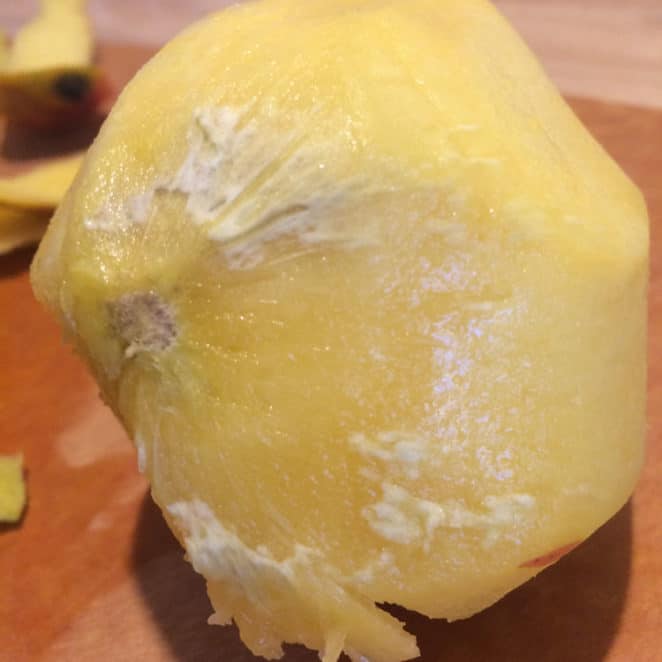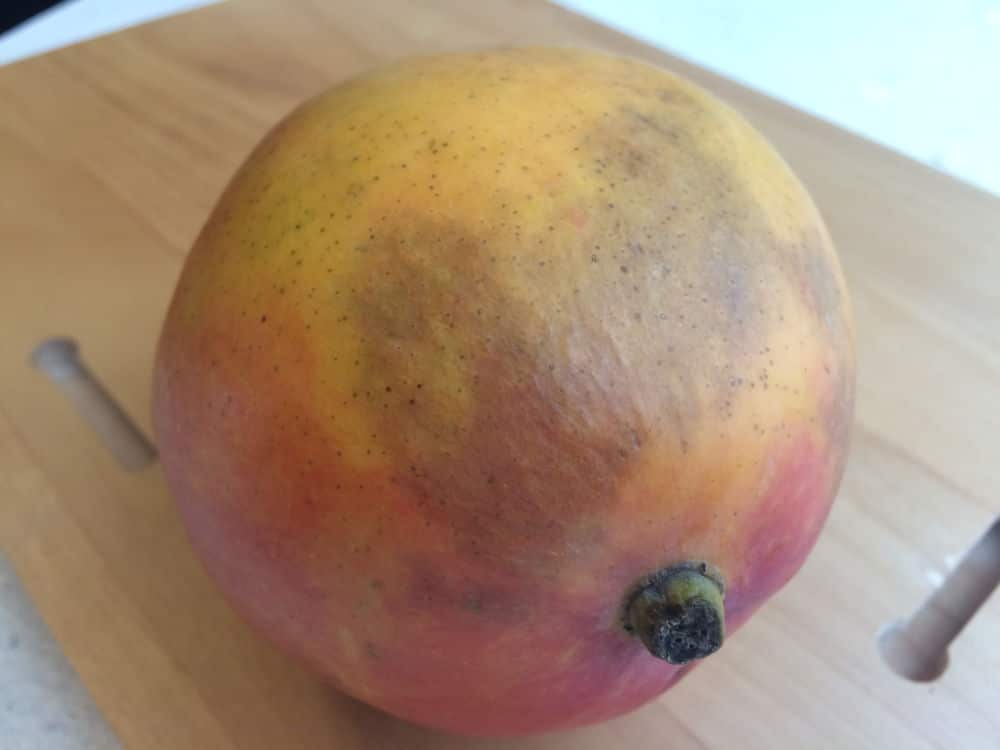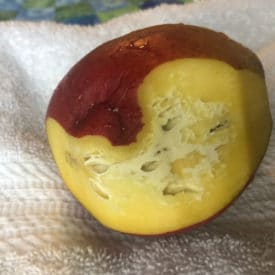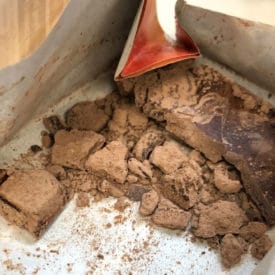
What you see: A mottled white, maybe gray-ish film just under the mango skin; possibly also darkened areas on the peel.
What it is: A scalded mango.
Eat or toss: Eat! You’ll probably want to cut off the white/gray film, but the flesh underneath it should be fine.
So, can you eat a mango with white stuff inside? Here’s what’s going on
White “stuff” inside a mango is often just part of the mango flesh that didn’t mature or ripen as planned. The mango may have been harvested too soon and handled in a way that stunted its normal maturation and ripening processes.
One event in a freshly harvested mango’s life that can affect its ripening is a hot water bath. Or, what I like the call the Fruit Fly Prevention Spa. This step, which is required to ensure mangos being exported to the United States don’t bring along any problematic hitchhikers, involves submerging the fruit in 115-degree water for at least an hour. The exact length of time determined by the mango’s size because the heat needs to penetrate through the entire fruit.
The outermost area of the mango, logically, gets the most heat exposure. But in a cruel twist of hot water bath fate, the outermost areas of the mango are the most likely to be immature and more vulnerable to potential negative effects from things like extreme temperatures.
The hot water bath usually doesn’t impact the mango, but sometimes weird things happen
Usually the mango emerges from the hot water as good as new, but if a mango, especially one harvested a little too early, is somehow in a hotter part of the tank or accidentally gets two baths, damage like this can occur. While the condition is called “scald,” the the tissue doesn’t turn white upon hitting the water. It actually starts out this white color and the hot water prevents it from ripening properly. The enzymes that normally would have turned its starchy white flesh into sweet yellow deliciousness go haywire and ripening doesn’t proceed to plan. Evidence often shows up on the fruit’s exterior as well, via darkened spots on the peel (see image below).
Cold temperatures can also cause “scald” in mangos
Jeffrey Brecht, a postharvest plant physiologist at the University of Florida, suspects that hot water was the culprit in the case pictured above, but also noted that “scald” can also be prompted by too-cold temperatures. From farm to store, mangos are chilled to slow aging and ward off problematic microbes, but they can’t be kept too cold (our standard fridge temps, for example, are bad for mangos). Just as in the too-hot water, the tropical fruit’s inner machinery struggles to function properly in the cold, which can negatively affect ripening or mess with already ripe fruit.
When you consider that it’s the outermost areas that suffer because they’re exposed to the most heat (or the most cold), it’s easy to understand why this beauty problem may be barely more than skin deep. Simply peel away the problematic areas and you’ll hopefully find nice mango flesh underneath. Though, quick disclaimer: the scalding may indicate that the rest of the fruit didn’t ripen optimally either, so while the mango may be OK for eating it also may not be the best mango you’ve ever had.
If you’re thinking to yourself, wow, these mangos are weak, they can’t seem to handle anything too hot, or too cold, Brecht offers some perspective. Noting that mangos spend more than an hour in that 115-degree Fahrenheit bath, he observes, “A person couldn’t tolerate that, so it’s pretty amazing that fruit can!”

SOURCES:
- Jeffrey Brecht. Post-harvest plant physiologist. Professor of horticultural science. University of Florida.
- Mango: Postharvest best management practices manual. Editor: Jeffrey K. Brecht. University of Florida Institute of Food and Agricultural Sciences. National Mango Board.
- Time-temperature Combinations that Induce Chilling Injury of Mangos. Jeffrey K. Brecht and Maria Cecilia do Nascimento Nunes, Center for Food Distribution & Retailing, University of Florida; and Fernando Maul, Universidad Del Valle, Guatemala. April 2012.











